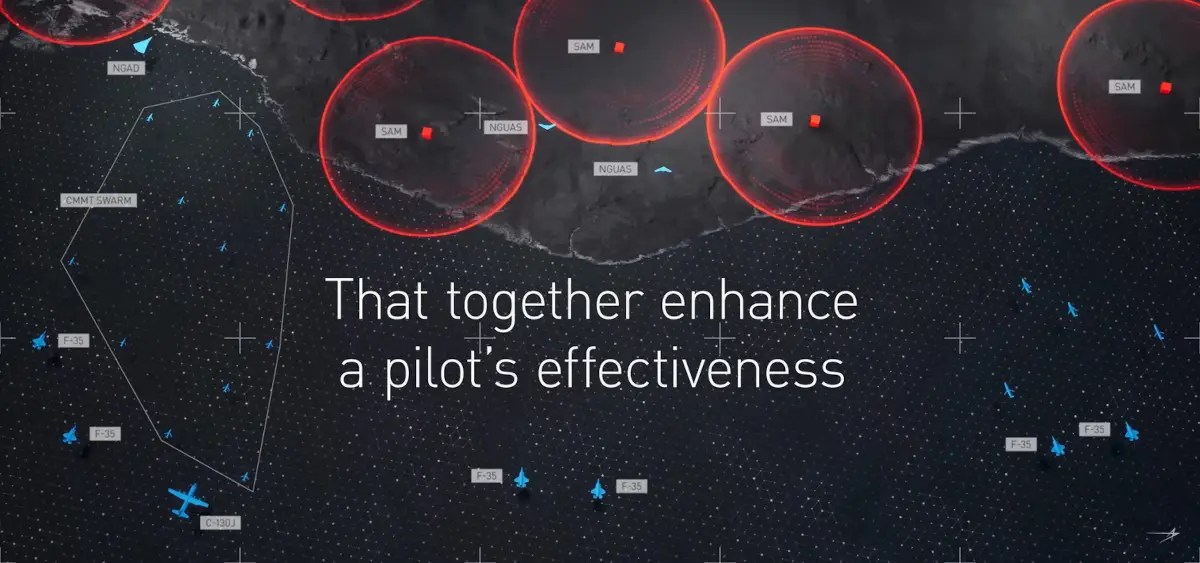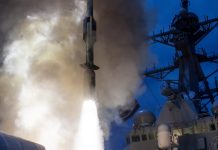Lockheed Martin’s Skunk Works has released its vision of the manned-unmanned ‘wingman’ concept, indicating the direction in which future US fighter projects and doctrine can evolve.
‘Game-Changer’ For US Navy – USN Air Chief Heaps Praises On CMV-22B Osprey VTOL Tiltrotor In Its 1st Deployment
Ukraine’s ‘Twitter Hero’ & US Army Veteran Getting Thrashed Goes Viral; Netizens Wonder If He Can Fight Russian Spetsnaz
The presentation depicts various large and small drones, high-end and attritable, with different roles controlled by a single fighter and integrated into a more comprehensive network of air assets operating in a contested battlespace.

An illustrated video by Skunk Works General Manager and Lockheed Martin CEO John Clark shows an F-35B flying ahead of a ‘flying wing’ UCAV; a UCAV that looks like a wingman with a v-shape tail with swept main wings and an air intake on top of the rear center-fuselage; a missile-like drone called the Common Multi-Mission Truck (CMMT) launched from the F-35 with pop-out wings, a v-shape tail and two symmetrical dug-in air intakes on the rear-left and right-hand side and; a bomb-like UAV with a v-shape tail and a dome on the top center-fuselage, possibly meant for satellite communication.
The second-last (the one launched from the F-35) is shown to have different modules inside its body, implying it can be customized for land-attack and kamikaze (suicide) missions.
How Does The ‘Swarm’ Work?
The CMMT UCAV/UAVs are shown flying ahead of two F-35s and a C-130J Hercules as a part of a CMMT swarm with a Next Generation Air Dominance (NGAD) fighter ahead of them near enemy shores. The enemy territory has several Surface-to-Air Missile (SAM) sites with the flying wing UAV outside its radius.
Two F-35s are flying separately, while the more prominent ‘wingmen are leading two more F-35s.’ The wingmen are labeled as ‘EW’ (Electronic Warfare) and ‘Decoy,’ with the latter shown drawing the SAM fire and the ones labeled EW sending signals jamming the SAM sites’ radars.
The flying wing drones perform Intelligence, Surveillance, and Reconnaissance (ISR), sending information to the third group of F-35s, which direct/control the wingmen to take appropriate action.
Indeed, this concept assumes the ‘peer competitor’ like Russia or China not to have developed wingmen and other aircraft-controlled UCAVs of their own, besides not relying on SAMs alone to tackle aerial threats.
Still Futile Against Peer Competitors
Any attack on land controlled by these countries will be primarily defended by their fighter-wingmen-decoy-ISR UAV teams, Airborne Early Warning (AEW) aircraft, and in the case of China, an entire naval flotilla with aircraft carriers, carrier-borne fighters, and other surface combatants with formidable Air Defence (AD) capabilities.
Clark seems to have recognized this oversight and said Skunk Works then began to explore ‘attritable’ unmanned platforms – cheap, dispensable platforms that commanders would be willing to use for high-risk missions instead of costlier advanced ones.
“In the context of any of these fights, attrition has got to be a part of the calculus. You can demonstrate any mission concept in an operational analysis venue and show that, hey, it works once. Can you make it repeatedly work over 30 days when you start to accumulate the losses of a campaign?

If you’re looking at the cost of losing a vehicle, let’s say $10 million, and your attrition rates are north of 80%, those numbers add up very quickly. And then that remaining 20% that you didn’t atrit, what’s the sustainment or logistics trail that comes with them to reconstitute them, to then go reuse them?” Clark said.
The Defence Advanced Research Projects Agency (DARPA) even considered experimenting with recoverable small drones that can be rescued by naval ships. But again, they realized the next time the logistical effort and operational risk of retrieving lost drones in a heavily chaotic and intense battlespace.
This is not to mention the effort to repair and send them back up. An adversary can always deliberately keep shooting down such ‘recoverable’ drones to lure US assets into a rescue mission, which could be their real target.
Moreover, in a long-drawn-out war, adversaries are likely to accept initial losses to learn US forces’ logistical and operational tactics to finalize their countermeasures.
The biggest drawback US forces still face in theatres like the Western Pacific is China’s Anti-Access/Area Denial (A2/AD) missiles and logistics. In the former, China’s DF-21D Anti-Ship Ballistic Missile (ASBM) can take out American aircraft carriers from a long distance against which there is admittedly no countermeasure, according to US Navy’s Admirals.
As for logistics, it is impossible to keep a long-drawn-out war without permanent basing agreements with partner nations and the first island chain quickly coming under attack by China’s DF-23 ballistic missiles.
The US military would therefore have to address these fundamental weaknesses, which are more political, economic, and strategic, instead of focusing purely on tactical military solutions.
- The author can be reached at satamp@gmail.com
- Follow EurAsian Times on Google News





